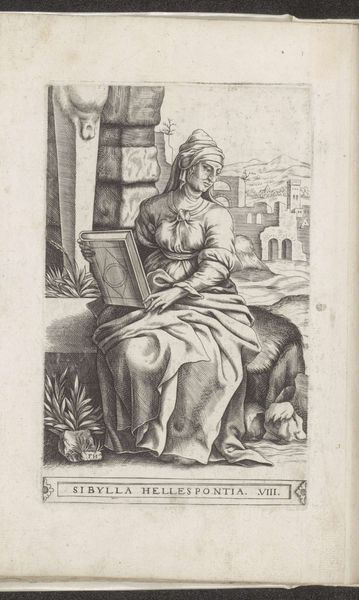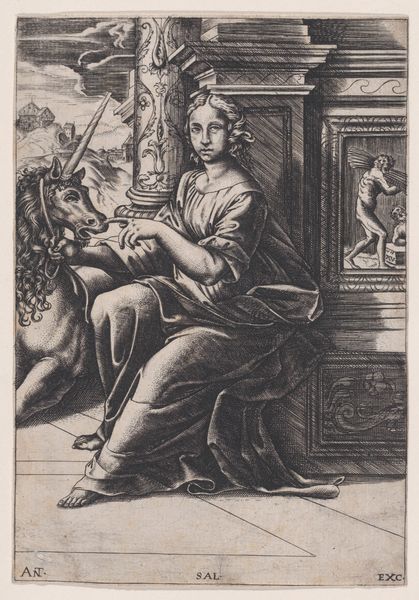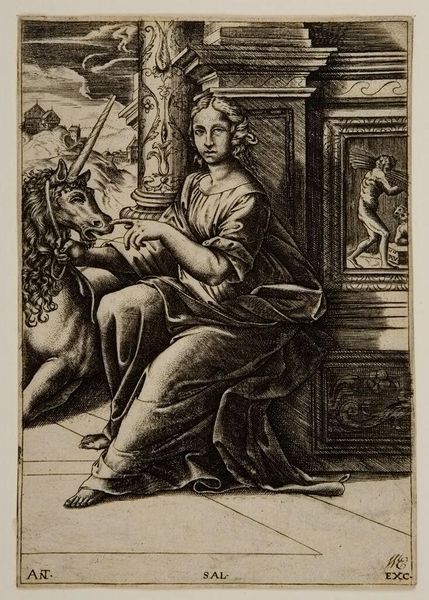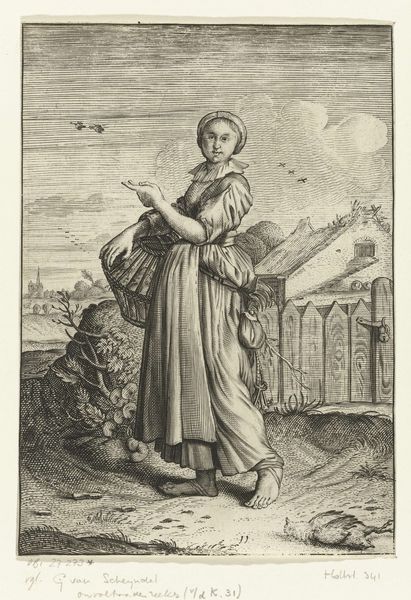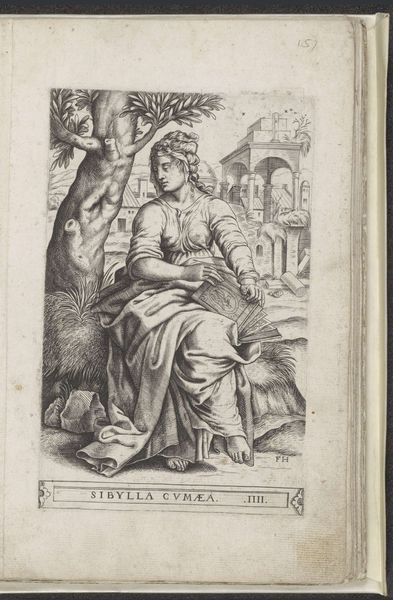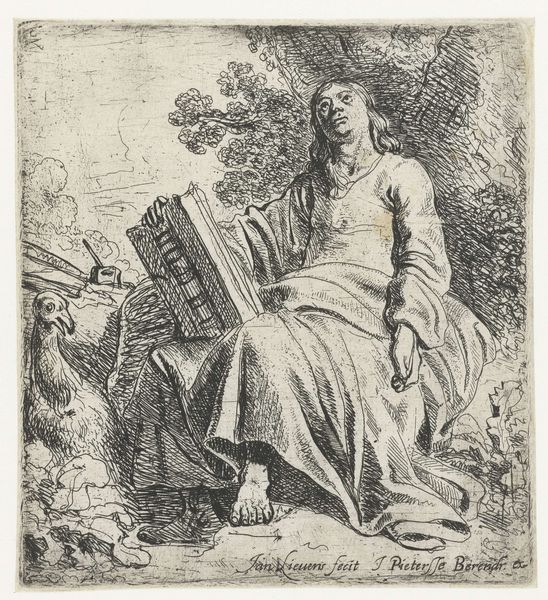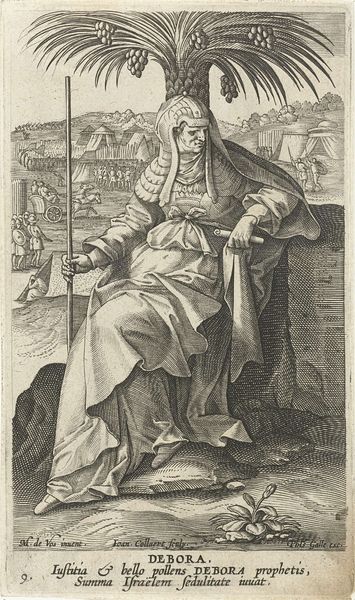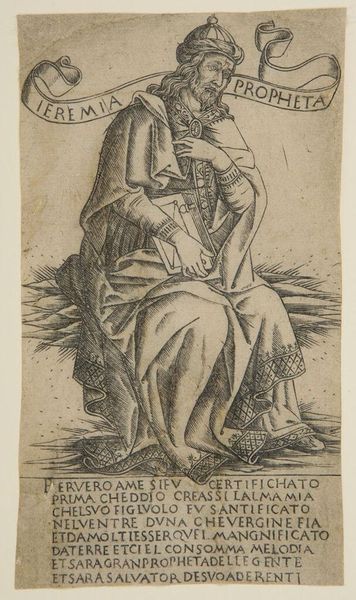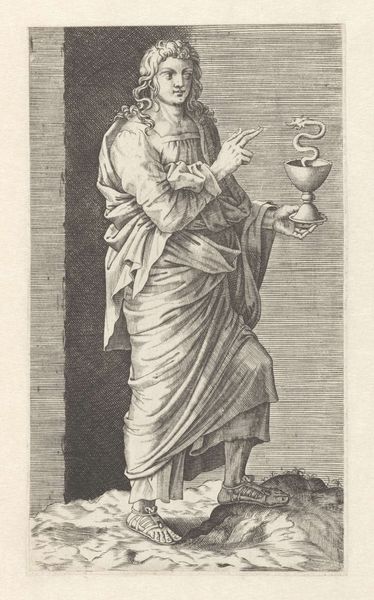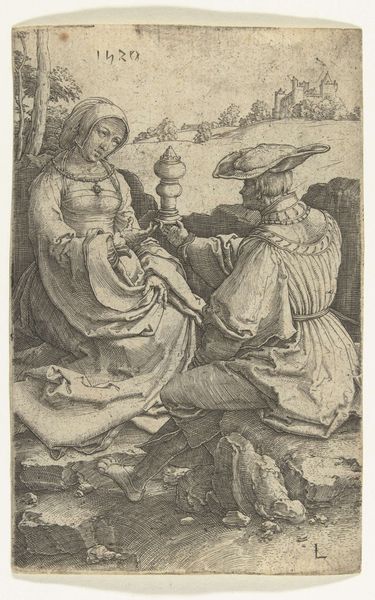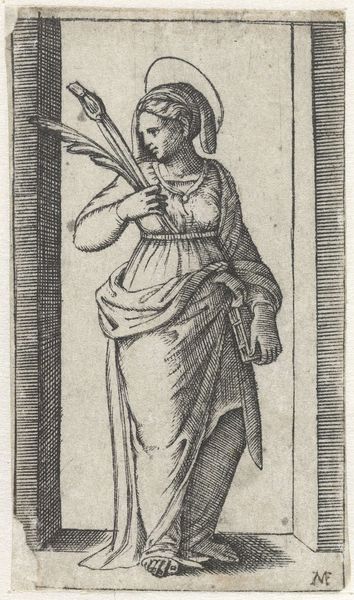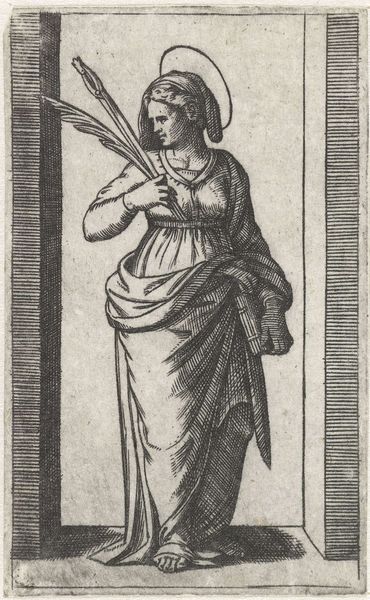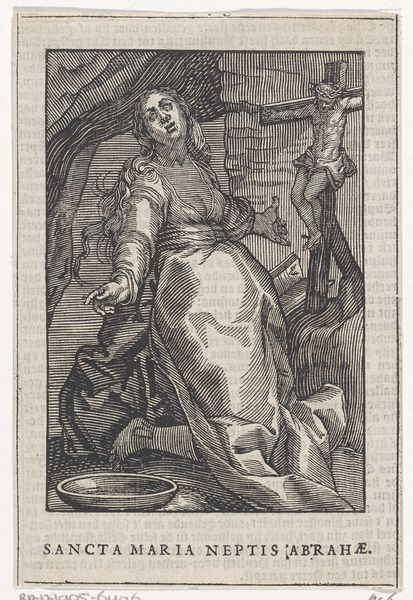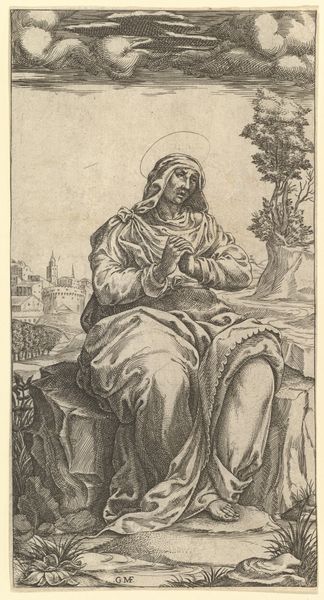
print, engraving
#
portrait
#
allegory
# print
#
mannerism
#
figuration
#
11_renaissance
#
history-painting
#
engraving
Dimensions: height 197 mm, width 125 mm
Copyright: Rijks Museum: Open Domain
This print, "Libische Sibille", was made by Frans Huys in the mid-16th century using an engraving technique. Engraving is an intaglio process, meaning that the image is incised into a metal plate, in this case probably copper. The artist would have used a tool called a burin to carve lines directly into the surface. Ink is then applied to the plate, filling these lines, and the surface is wiped clean. When paper is pressed against the plate, the ink transfers, creating the print. The fine, precise lines of the engraving lend themselves well to depicting the textures of the Sibyl's drapery and the architectural details in the background. This was a laborious, highly skilled process, demanding years of training. Prints like this played a crucial role in disseminating images and ideas across Europe at this time. Considering the material and processes involved, we can appreciate how printmaking facilitated the spread of knowledge, while also recognizing the intense labor and expertise required to create such intricate works. This piece reminds us not to separate the aesthetic qualities of an artwork from its means of production, especially the contribution of skilled artisans.
Comments
No comments
Be the first to comment and join the conversation on the ultimate creative platform.
